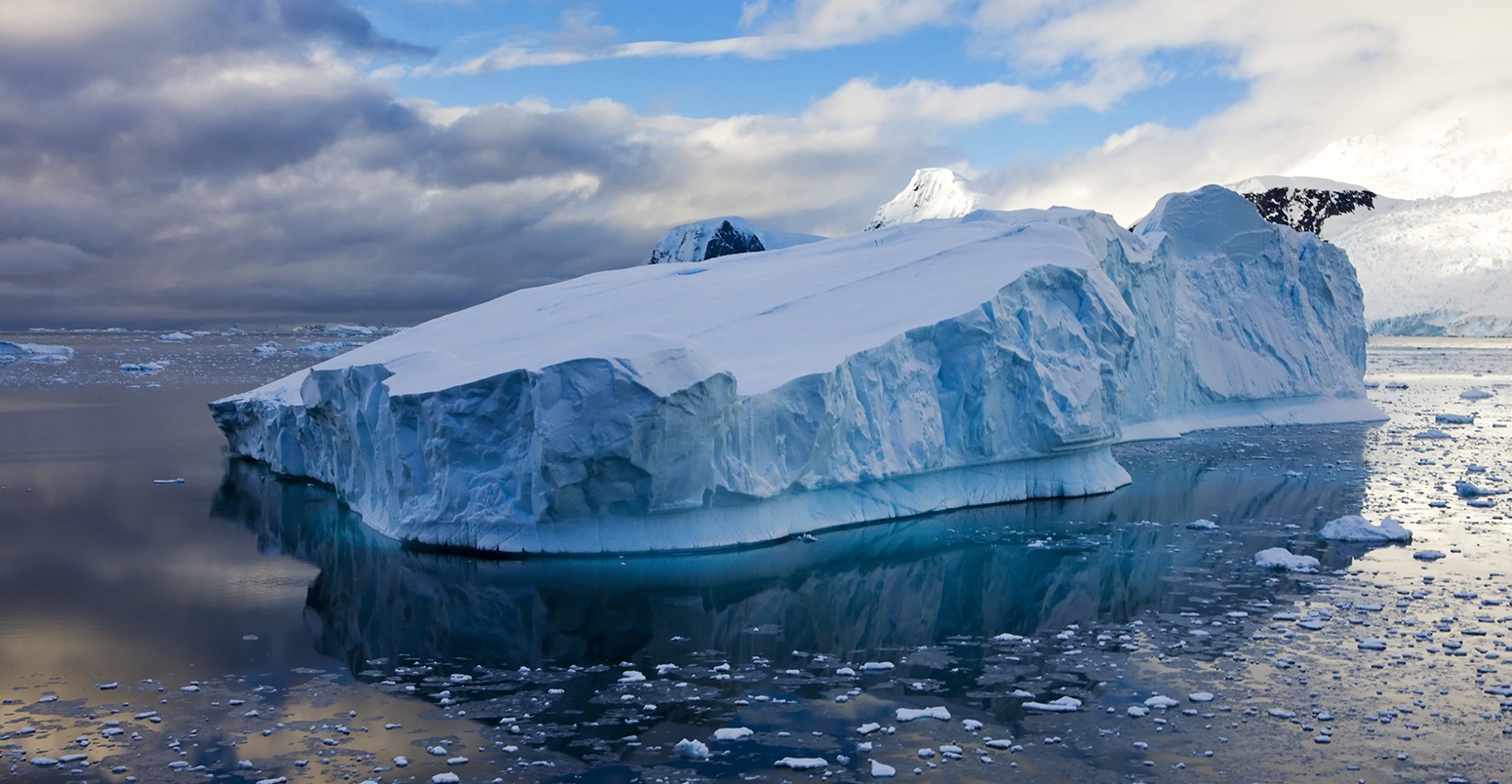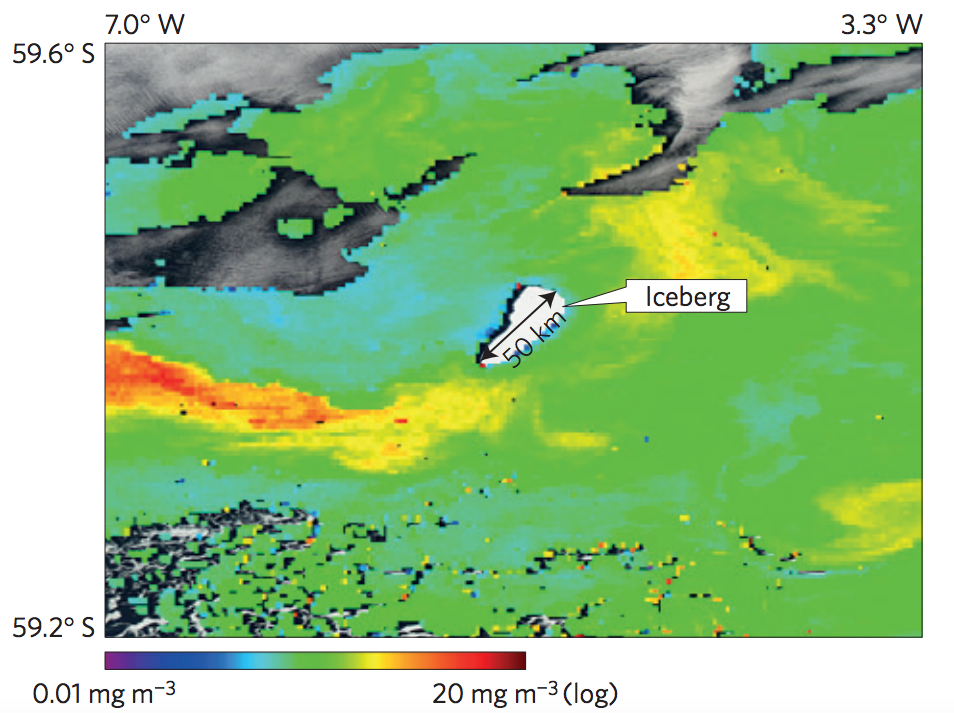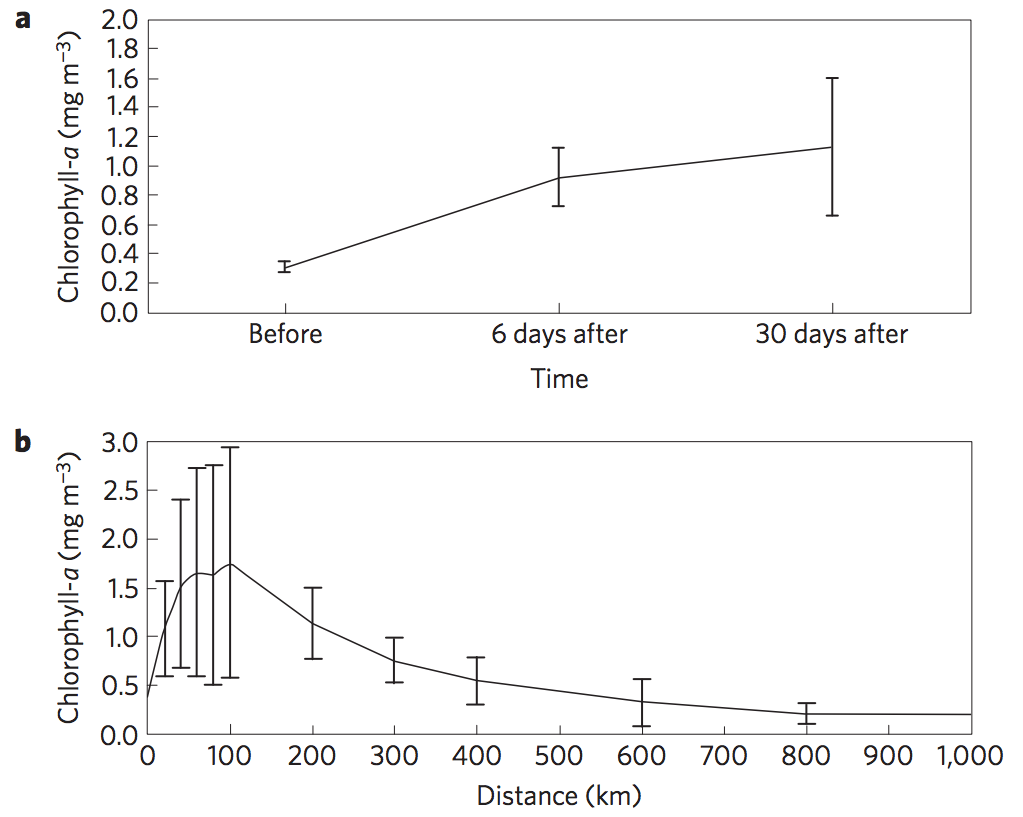
Giant icebergs boost Southern Ocean carbon storage, says study
Robert McSweeney
01.11.16Robert McSweeney
11.01.2016 | 4:21pmIcebergs the size of Singapore could be playing a bigger role in how much carbon the Southern Ocean absorbs than previously thought, a new study says.
The findings suggest that if more icebergs break off from Antarctica’s ice sheets in a warmer world, they could inadvertently boost ocean carbon storage. This could help to offset the accumulating CO2 in the atmosphere by a few percent, the researchers say.
Carbon sink
One of the main ways the oceans take up and store CO2 is through the “biological pump”. Tiny ocean plants, such as phytoplankton, use sunlight, nutrients and CO2 during photosynthesis to generate energy for growth. When plankton die, they sink to the bottom of the ocean, taking the carbon they’ve absorbed with them.
The Southern Ocean accounts for around 10% of all the CO2 absorbed by the world’s oceans. This is less of a contribution than the smaller Indian and South Pacific Oceans, however, because it contains relatively low levels of dissolved iron that plankton need to photosynthesise.
An important source of iron for the Southern Ocean is the dust and rock debris that accumulates on Antarctica’s massive ice sheets. This is released into the ocean when the ice melts or breaks off (“calves”) as icebergs in the ocean.
Giant icebergs can have an increased impact on plankton growth as they melt and “fertilise” the ocean with nutrients, the Nature Geoscience study says, and could be responsible for as much as a fifth of the carbon absorbed by the Southern Ocean.
Satellite images
Using 175 satellite images taken between 2003 and 2013, the researchers estimated plankton growth around 17 giant icebergs as they floated around in the Southern Ocean.
The images record changes in the colour of the ocean surface, picking up the green pigment of the chlorophyll in the plankton as they increase in number.
You can see this in the satellite image below. Slightly confusingly, the high chlorophyll levels are shown as red and yellow shading in the wake of the giant iceberg, while the greens and blues show lower chlorophyll concentrations.

Satellite measurements of enhanced chlorophyll levels around the ‘C16’ giant iceberg in the Southern Ocean, taken on 12 January 2013. Red and yellow areas show high levels spreading out from the iceberg. Grey shading shows cloud cover. Source: Duprat et al. (2016).
The researchers found that chlorophyll levels would increase by around a factor of 10 in the water as a giant iceberg passed through.
As you can see in the charts below, this increase in plankton growth would last for at least a month (upper chart) and would typically extend 20-500km around the iceberg, and even by more than 1,000km (lower chart).

Chlorophyll levels in terms of a) how long the increase lasts before and after the passing of a giant iceberg (top graph), and b) the distance the increase extends from the iceberg (bottom graph). Source: Duprat et al. (2016).
The findings suggest that earlier research on smaller icebergs has significantly underestimated the importance of ocean fertilisation by icebergs in the Southern Ocean, says co-author Prof Grant Brigg, a professor of earth systems science at the University of Sheffield. He tells Carbon brief:
“We have shown that the influence of giant icebergs extends over a distance 4-10 times greater than would be expected from ‘normal’ iceberg studies.”
Big friendly giant?
So, just how giant is a giant iceberg? At least one side of it has to exceed 18km long – approximately the length of the Caribbean island of Grenada – but icebergs have been recorded as long as 295km, says Brigg:
“A more typical giant iceberg was ‘B31’, that calved two years ago, which was about 700km squared in area, or about the size of the island of Singapore. They can be up to 500-600m deep.”
On average, a few giant icebergs break off the Antarctic ice sheet each year and several dozen can be floating around in the Southern Ocean at any one time, the paper says.
But this might be increasing as global temperatures rise, says Brigg:
“There is some evidence that overall ice discharge from Antarctica has increased 5% over the last 20 years and it is possible that this will increase further under global warming, particularly from West Antarctica and the Antarctic Peninsula.”
If the volume of icebergs breaking off from Antarctica increases in future, this may trigger an increase in carbon uptake in the Southern Ocean, says Brigg:
“The magnitude of this carbon storage may well therefore increase, slowing the rate at which atmospheric CO2 increases. It is difficult to forecast, but I suspect the negative feedback on CO2 increase will be small, perhaps a few percent of current rates [of accumulation in the atmosphere].”
But other scientists not involved in the study caution that the effect may not be as clear cut. Dr David Barnes, a marine ecologist at the British Antarctic Survey, and Dr Jacqueline Stefels, a senior scientist at the University of Groningen, are currently at the Rothera Research Station in Antarctica. Via email, they tell Carbon Brief:
“To describe the effect as negative feedback may be a little strong as there is no indication that the extra carbon is sequestered or that the size of icebergs is climate related.”
However, the findings of the new study should spur more investigation of this effect, they add.
Main image: Enormous iceberg drifting off the Antarctic Peninsula, Antarctica. © Adam Burton/robertharding/Corbis.
Duprat, L. P. A. M. et al. (2016) Enhanced Southern Ocean marine productivity from fertilization by giant icebergs, Nature Geoscience, doi:10.1038/ngeo2633.
-
Giant icebergs boost Southern Ocean carbon storage, says study
-
Chlorophyll levels in the ocean may increase by a factor of 10 as a giant iceberg passes through

